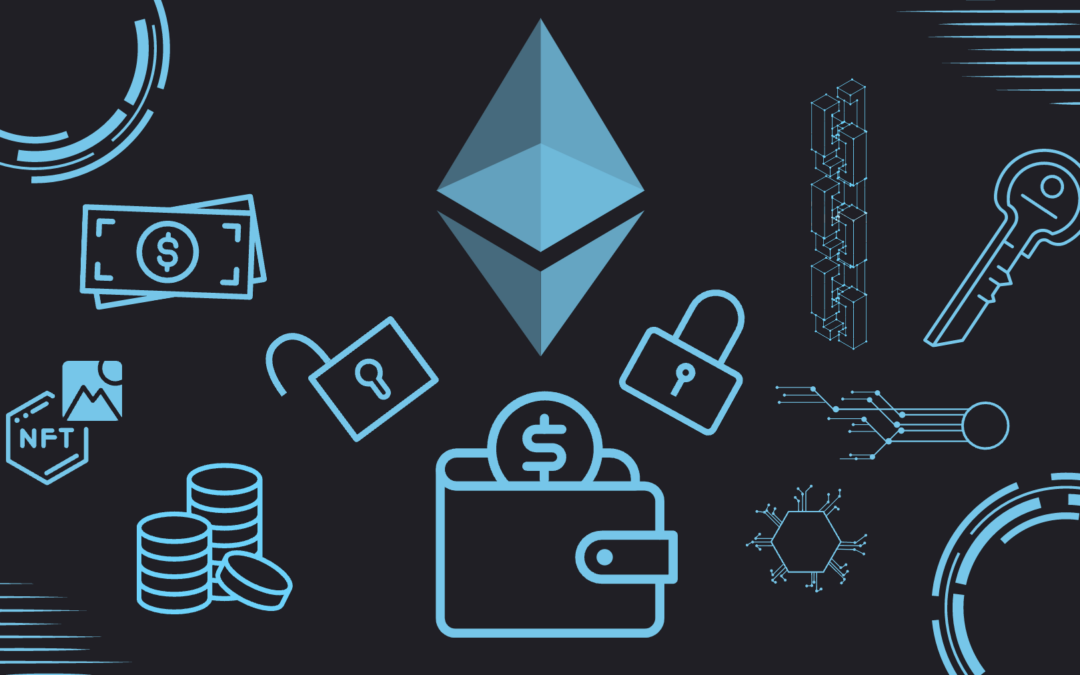The world of cryptocurrency can be daunting for newcomers, with complex concepts like smart contracts and cumbersome wallet setups. To make the onboarding process smoother and encourage wider adoption of web3 technologies, Vitalik, one of Ethereum’s founders, along with Yoav Weiss, Kristof Gazso, Namra Patel, Dror Tirosh, Shahaf Nacson, and Tjaden Hess, introduced EIP-4337, which later became ERC-4337. These groundbreaking proposals aim to bring Smart Accounts to every web3 enthusiast, providing a seamless and user-friendly experience.
First, what’s an EIP and an ERC?
Ethereum Improvement Proposals (EIPs) are documents that describe new features or changes to the Ethereum platform. These proposals are created by anyone in the Ethereum community and are reviewed by other community members. If an EIP is accepted, it becomes part of the Ethereum protocol. EIPs can cover a wide range of topics, from technical improvements to the Ethereum Virtual Machine (EVM) to changes in the Ethereum governance structure.
An Ethereum Request for Comment (ERC) is a type of EIP that proposes a standard for a specific application on the Ethereum platform, such as token standards, smart contract interfaces, and other application-level standards. Once an ERC is accepted, it becomes a standard for that specific application.
ERC-20 and ERC-721 are two of the most well-known ERCs. ERC-20 is the standard for tokens on the Ethereum network, while ERC-721 is the standard for non-fungible tokens (NFTs). These standards have helped to create a thriving ecosystem of decentralized applications and digital assets on Ethereum.
Regarding EIP-4337, it has already been reviewed and accepted by the community and has now become an ERC-4337. This proposal aims to bring Smart Accounts to every web3 enthusiast, providing a seamless and user-friendly experience. ERC-4337 is currently in the process of becoming a standard, which will further promote the adoption of web3 technologies.
Understanding ERC-4337: Account Abstraction Made Simple
ERC-4337 is an Ethereum standard that seeks to supercharge user accounts, transforming them into smart accounts through account abstraction. But what exactly is account abstraction?
In simple terms, account abstraction will allow users to have non-custodial wallets as programmable smart contracts. This will make user accounts more efficient and versatile by allowing them to perform various tasks through these smart contracts. With ERC-4337, the goal is to eliminate the complexities associated with traditional wallets, such as relying heavily on seed phrases and private keys.
The Concept of Smart Accounts
To understand smart accounts better, let’s compare them to traditional pocket wallets. A traditional wallet has separate sections for cash, credit cards, and coupons. Similarly, a smart wallet, enabled by account abstraction, has a unified payment mechanism that can function as cash, credit cards, or coupons based on the user’s needs.
In blockchain, account abstraction enables smart accounts, which are self-executing smart contracts linked to user wallets. They can manage crypto subscriptions, handle multi-factor authentication, and perform tasks through code.

Benefits of ERC-4337: The Power of Smart Accounts
ERC-4337 unlocks numerous benefits for users, making their experience in the crypto realm more user-friendly and efficient:
1. Account Recovery and Seamless Wallet Setup: Users can rely on group-access wallets for recovery, eliminating the need for seed phrases.
2. Bundled Transactions: Users can bundle multiple transactions into one, saving time and gas fees.
3. Pre-approved Transactions: Users can pre-approve transactions for recurring activities like minting NFTs or playing games.
4. Sponsored Transactions: Users can use sponsored transactions for gas fee payments, enabling demo transactions and gas-free experiences.
5. Custom Spending and Usage Limits: Users can set custom spending limits and receive alerts based on their preferences.
6. Automated DeFi and Trading Access: Smart accounts can automate yield farming and trading activities.
7. Multi-Factor Authentication and Custom Coding: Users can customize authentication methods and transaction instructions.
8. One-Click Experiences: Smart accounts reduce the need for individual transaction signing, streamlining user interactions.
9. Pay for gas fees with any token: This improvement enables users to pay fees with any token they have, such as stablecoins, without having to convert and hold ETH.
10. Signature aggregators: This benefit enables multiple signers to collaborate, with only one signer being utilized in a transaction.
Conclusion
ERC-4337 brings a new era of user-friendly experiences to the world of crypto with its powerful smart accounts. By abstracting the complexities of traditional wallets and introducing seamless functionalities, ERC-4337 paves the way for wider web3 adoption.
Ethereum and its stakeholders can expect increased transaction volume, improved user engagement, and accelerated growth as smart accounts become more widespread. With ERC-4337, anyone can dive into the world of cryptocurrencies without the need to become a technical expert.
Take the next step towards effortless crypto experiences with InMind Software’s cutting-edge tools and solutions. Empower yourself with smart accounts and embrace the future of web3 technologies. Join us today and be a part of the revolution in crypto onboarding and user experience!
Find out what’s possible for your business by scheduling a free 30-minute consultation with Omar. Are you curious to see what technology can do for your business? Or, do you already have a vision and need someone to come alongside you to make it a reality?
Our co-founder, Omar Saadoun, is a leading expert in emerging digital technology whose passion is to help business owners like you realize the limitless possibilities of tech.

 Co-Founder & CEO @ Inmind - Blockchain & Mobile Expert | DAO / Tokenization / Web3 | CTO @ Brainstems (Former TIEX) | Board Member @ CUTI
Co-Founder & CEO @ Inmind - Blockchain & Mobile Expert | DAO / Tokenization / Web3 | CTO @ Brainstems (Former TIEX) | Board Member @ CUTI